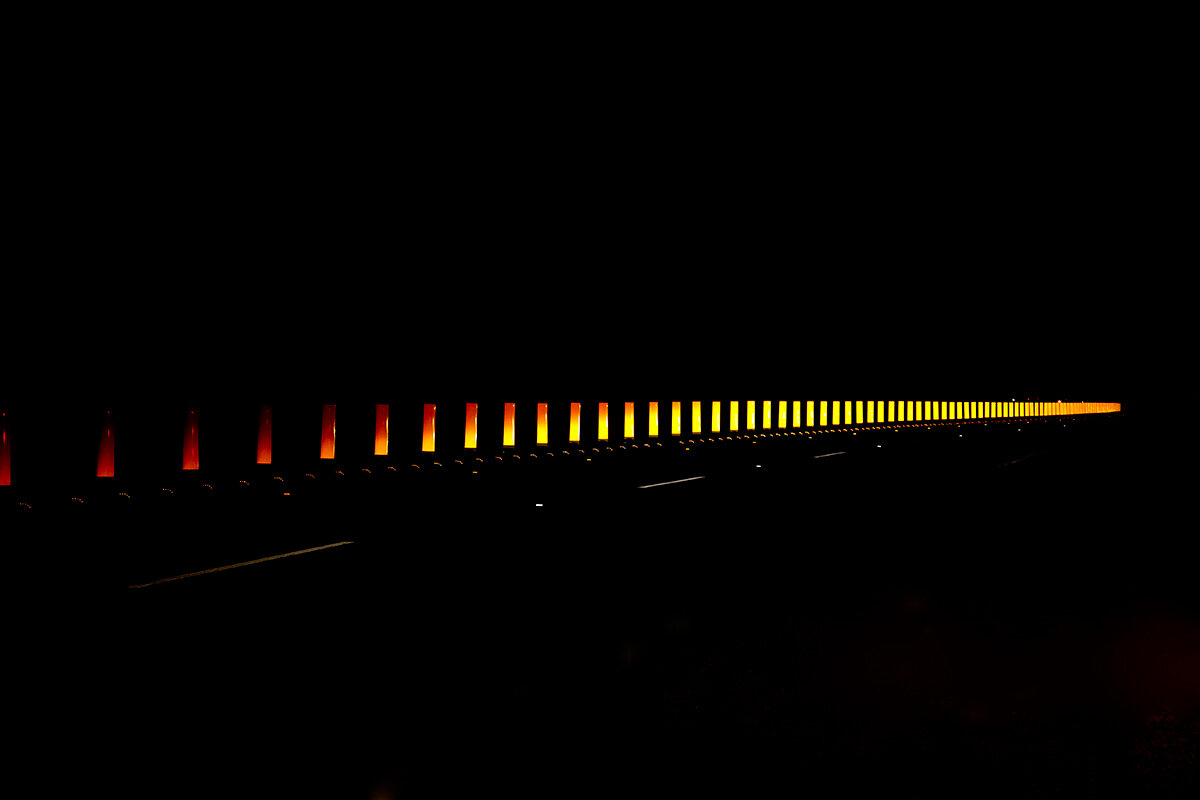Robert von Sternberg
From the earliest efforts to irrigate the desert, to the postwar population ex-plosion, to present-day suburban sprawl and conservation efforts, human enterprise has shaped the landscape of Los Angeles. It is perhaps appropriate that Robert von Sternberg, who has lived and worked most his life in Los Angeles County, identifies human incursions into the natural world as a recurring theme at the heart of his photographic practice.
Avid travelers, von Sternberg and his wife Patricia are especially fond of road trips, where the photographer delights in the offbeat side of the American touristic tradition. Far from focusing on the most canonical or scenic tourist destinations, the artist seizes on the visual possibilities of overlooked roadside attractions and chance conjunctions. The surreal artificial lighting that illuminates the American nighttime often provides the “definitive photographic images” that von Sternberg seeks in his travels: an incandescent gas station, the lurid red glow from a paper lantern, a grid of ceiling lights that mimic distant stars. Camera-toting fellow tourists also become subjects as they seek their own “definitive images”—which sometimes also include the photographer himself.
More often, though, von Sternberg captures scenes in which human figures are distant or absent. In this, his “decisive moments” are very unlike the densely populated ones pictured by Henri Cartier-Bresson. Still, von Sternberg’s roadside moments are crowded despite their ostensible vacancy. Through the roads, fences, signage, buildings, and all the other material structures of civilization, humanity marks the land; even in our bodily absence, we make our presence insistently known.
On Robert von Sternberg’s Photography by Caitlin Silberman Norton Simon Museum, Pasadena, California April 2015 www.robertvonsternberg.com





























